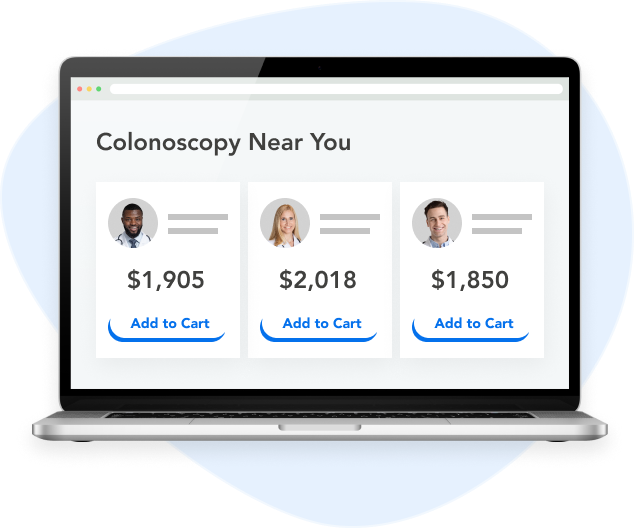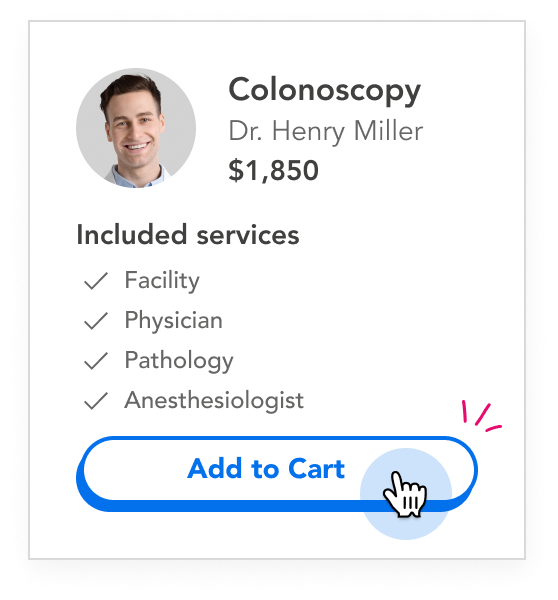Cesarean Delivery (C-Section) in the Arcadia Region
Save by purchasing this procedure online.
Similar Procedures: Vaginal Delivery, Cesarean Delivery (C-Section) with Prenatal and Post Delivery Visits, Vaginal Delivery with Prenatal and Post Delivery Visits
National Average 20,995
Regional Average13,812Save $7,183
Financing Options
Promotional financing available when you pay with CareCredit. $200 minimum purchase. What is CareCredit?
MDsave and Your Insurance
Contact your insurance company directly to see if your purchase can count towards your deductible. Details
Hendricks, Lisa, MD
Obstetrics and Gynecology (OBGYN)
4.5
8340 Collier Boulevard
Naples, FL 34114
Offered by

Guzman, Dr. Ruben
Obstetrics and Gynecology (OBGYN)
4.3
713 E. Marion Ave, Suite 139
Punta Gorda, FL 33950
Offered by

Hankinson, Scott, MD
Obstetrics and Gynecology (OBGYN)
3.3
2380 Harbor Blvd.
Port Charlotte, FL 33952
Offered by

Leff, M.D., Dr. Ricky
Obstetrics and Gynecology (OBGYN)
3.7
1012 N. Mills Ave
Arcadia, FL 34266
Offered by

Money Back Guarantee
We will refund your payment in full if you end up not needing your purchased procedure and do not receive care. Details
Get Care In Three Easy Steps
Compare Upfront Prices

Search by procedure and location to browse local providers and compare upfront pricing.
Buy Your Procedure

Pay for your procedure online or by calling (844) 256-7696. Or buy your procedure at the facility before your appointment is scheduled.
Receive Your Care

Follow the scheduling instructions given by your provider. Bring your voucher to your appointment.
Frequently Asked Questions
View All FAQsCesarean Delivery (C-Section) Cost in the Arcadia Region
Save by purchasing this procedure online.
Cesarean Delivery (C-Section) Cost near Arcadia, FL
Procedure Details
What Is a Cesarean Section, or C-section?
A cesarean section, often called a C-section, is a surgery that delivers a baby via incisions in the abdomen and uterus. It's used when a pregnant woman can't or chooses not to deliver a baby through vaginal birth. It is sometimes also spelled "caesarian" section.
Why Is a C-section Done?
A C-section is usually performed when a doctor thinks vaginal delivery might be too dangerous for the baby, the mother or both. In some cases, your doctor will recommend a C-section long before labor begins. In other cases, a C-section only becomes necessary because of complications that happen during labor.
Reasons that a C-section might be recommended include:
Abnormal fetal heartbeat: your doctor might be concerned a vaginal birth wouldn't be safe for the baby.
Your baby is in an abnormal position: if the baby is in a breech position -- his or her feet or buttocks are entering the birth canal before the head — a C-section might be the safest way to deliver.
A problem with placenta or umbilical cord: if the placenta covers your cervix opening, or part of the umbilical cord moves through the cervix ahead of the baby
Stalled labor: If your labor seems to stalland your cervix isn't opening
Large baby: if your baby is too large to easily deliver through vaginal birth
You're carrying twins, or more: there are more often complications with multiples, including the lead baby being in an abnormal position
Health concerns with mother: including diabetes, high blood pressure, heart issues or an active genital herpes outbreak
You've had a C-section before: In some cases, mothers can deliver vaginally after a previous C-section. In other cases, doctors may believe it's safer to have another C-section.
How Common Are C-sections?
C-section rates vary by country. In the United States, about 32 percent of the 3.9 million births in 2017 were by C-section.
Can You Choose a C-section Even If Your Doctor Thinks Vaginal Birth is Safe?
Women sometimes request C-sections to have a planned delivery or to avoid labor and its possible complications. Doctors sometimes perform them in those cases. But often, they'll recommend against a C-section if the woman plans on multiple births in her life. Repeated C-sections can have medical complications, including an increased risk of problems with the placenta.
How Do You Prepare For a C-section?
If you're having a planned C-section, your doctor might recommend a blood test to provide more information about your blood type in case you need a transfusion during surgery, which is rare. You might also speak with the anesthesiologist for your surgery about any medical conditions that might be important.
Depending on the type of anesthesia your medical team plans to use, you might be asked to not eat or drink anything for about eight hours before the surgery.
Even if you're planning a vaginal birth, you should talk to your doctor about the details of C-sections, in case one becomes necessary during labor.
What Can You Expect Immediately Before the Surgery?
The medical team will cleanse your abdomen and place a catheter (a small tube) into your bladder to collect urine. The team will also place an intravenous (IV) line into a vein in your hand or arm, which allows the team to administer fluids or medicine during the surgery.
In most cases, you'll be given regional anesthesia, which will numb the lower part of your body while you remain awake. In some cases, general anesthesia might be necessary, which will put you to sleep.
What Can You Expect During a C-Section?
In a C-section, the surgeon makes an incision into the lower part of your abdomen, near the pubic hairline, then cuts into the uterus. The surgeon may use a vertical cut — called a longitudinal cut — from the navel to the pubic hairline, or the cut might be horizontal — called transverse — across the public hairline. Transverse is more common. It generally heals well and increases the chance for a vaginal birth in future pregnancies.
The baby is delivered through the openings in the uterus and abdomen.
Your surgeon will use sutures to close the incision in your uterus, and more sutures or surgical staples to close the incision in your abdomen. A bandage will then be applied to the area.
What Can You Expect After the Surgery?
Hospital stays after the surgery are usually two to four days. You'll need help at home for several days afterward, because you'll likely have pain and fatigue for several days.
You can take pain relievers, but only those recommended by your doctor. Aspirin and other medications can increase the chance of bleeding.
You'll schedule a follow-up visit to your doctor about two or three weeks after the procedure.
You'll need to avoid sex for six weeks after the surgery.
Are There Any Risks With a C-section?
As with any surgery, there are risks, and this surgery involves two people, of course.
Possible risks to your baby:
Breathing problems: babies born via C-section have a greater chance of developing abnormally fast breathing during the first few days after birth.
Surgical cut: While rare, the baby's skin can get nicked during the surgery.
Possible risks to the mother:
Infection of the incision area or the lining of the uterus.
Hemorrhaging: the surgery can cause heavy bleeding during and after the birth.
Adverse reactions to anesthesia
Blood clots: the procedure increases your risk of blood clots, especially in your legs or pelvic area. Your medical team will encourage you to walk as soon as possible after the surgery to lower this risk.
What Should YouWatch for After the Surgery?
You'll want to contact your doctor if you have any of these symptoms after the surgery:
- Your incision area is unusually red, swollen or leaking a fluid
- A fever
- Heavy bleeding
- Pain in your legs
- Overall pain that is getting worse
How Does the Cost of a C-section Compare to Vaginal Birth?
C-sections are generally more expensive. Vaginal birth costs, including total hospital bills and other charges and with prenatal care and post-natal care, average about $20,000 nationally. The national average cost of a C-section, with prenatal and post-natal care, is about $25,000. In some areas, those costs — and the difference in costs — are higher.
Your health insurance maternity coverage will often cover much of the cost. But copays can still amount to thousands of dollars.
Sources:
https://www.acog.org/Patients/FAQs/Cesarean-Birth
https://www.mayoclinic.org/tests-procedures/c-section/about/pac-20393655
https://www.stanfordchildrens.org/en/topic/default?id=cesarean-delivery-92-P07768
Procedures
© Copyright 2025 MDsave Incorporated.
All Rights Reserved.



